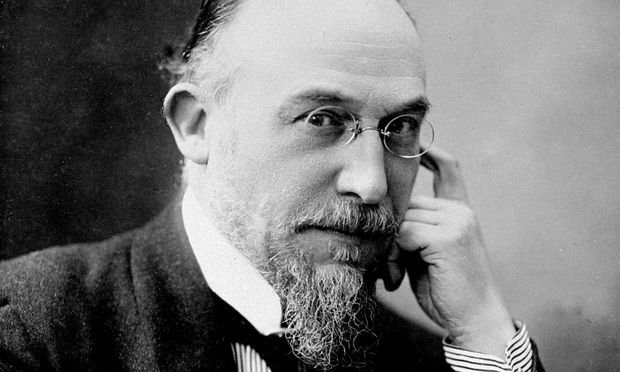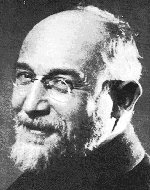
“The harmonic language is very advanced, presenting sequences of unprepared, dissonant and unresolved chords. With Sarabandes in 1887, “Satie now turned his back on the Middle Ages and the organum-like, petrified movement of Ogives and instead wrote music with a kind of solemn dance character, constantly shifting between immobility and movement, between melodic expressivity and vibrant chords, ” wrote Olof H öjer in the liner notes for a 1996 CD of Satie ’s piano works. Satie began setting some of Contamine ’s mediocre verse to music and his compositions El égie, Les anges, Les fleurs, Sylvie and Chanson date from this time. Around this same time Satie befriended a Spanish symbolist poet known as Contamine de Latour, who claimed a kinship with Napoleon as well asa right to the French throne. He grew increasingly immersed in medieval music and Gothic art during this period, and a set of four piano pieces, Ogives (whose name refers to the rib vaults of Gothic architecture) was written during this era and published in 1886. In 1890 he met Peladan, and became the society ’s unofficial composer. During his recuperation he read a great deal by Josephin Peladan, the leader of a mystical artistic society called Rose et Croix, also known as the Rosicrucians. Satie was conscripted into the military in 1886, but fell ill with bronchitis and was discharged. Instead of subtitling them in the usual style using “Opus 1 ” to indicate the first entry in his catalog, Satie demonstrated his wry sense of humor and used “Op. The first two pieces Satie wrote for the piano, Valse-Ballet and Fantaisie-Valse, were published in 1885. He was a mediocre student who made up his own piano exercises and was eventually dismissed. It was likely her influence, however, that led Satie to take up study at the rigorous, but conservative Paris Conservatoire. Satie disliked his stepmother, another musically gifted individual named Eugenie Barnetsche, who favored the Romantic compositions of Felix Mendelssohn, Frederic Chopin and other popular composers of the time. In 1878, he moved to Paris with his father, who remarried the following year.

Satie later showed a marked preference for such constructions in his own compositions, and was deeply interested in medieval music for much of his early career. His musical ability was already in evidence, and he began lessons with the local organist, a man named Vinot, who introduced him to Gregorian plainsongs, the serenely monophonic religious chants dating back to music of the 13th century. They had Satie re-baptized in the Roman Catholic faith. Satie was left with his grandparents in Honfleur by his widowed father. Satie ’s mother Jane was Scottish and wrote her own pieces for the piano. Both his father and his uncle -known as “Uncle Seabird, ” who instilled in him a love a theater and a disdain for the conventional -were ship brokers. Satie was born Erik Alfred Leslie Satie in 1866 in Honfleur, near Le Havre, France. But his ground-breaking use of bitonal or polytonal notes would become a hallmark of twentieth-century modernist music.

Satie left a relatively scarce body of work behind, most of it written for the piano. His reliance on unusual harmonic configurations was a reaction against the heavy, symbol-rich music of his era, a time when the works of Romantic European composers like Richard Wagner were still very much in vogue.

His work was extremely simple in structure, yet innovative and marked by a characteristic wit. Only decades after his 1925 death was French composer Erik Satie hailed as a genius of contemporary classical music.


 0 kommentar(er)
0 kommentar(er)
